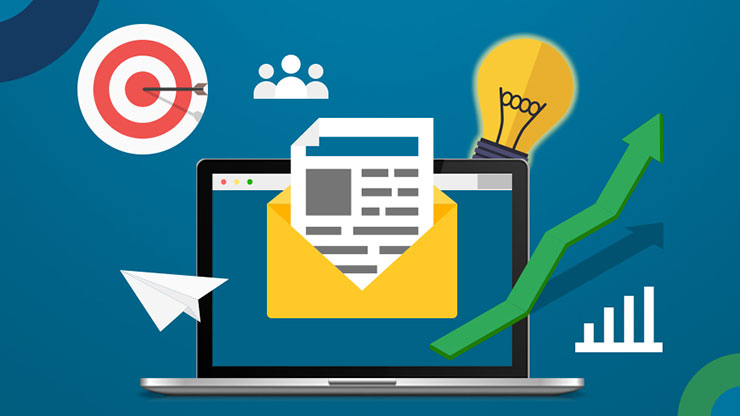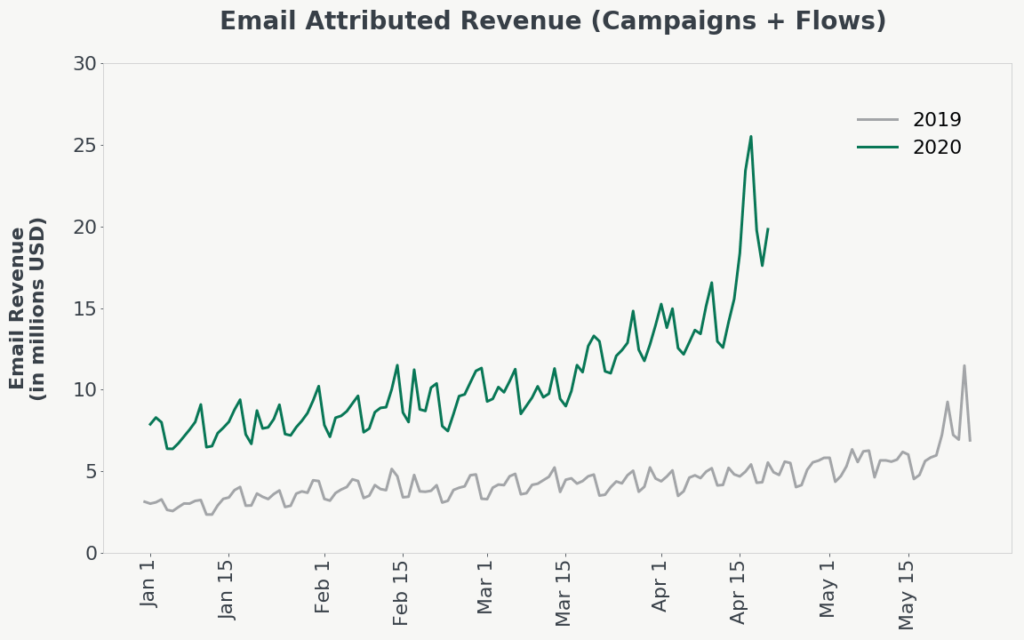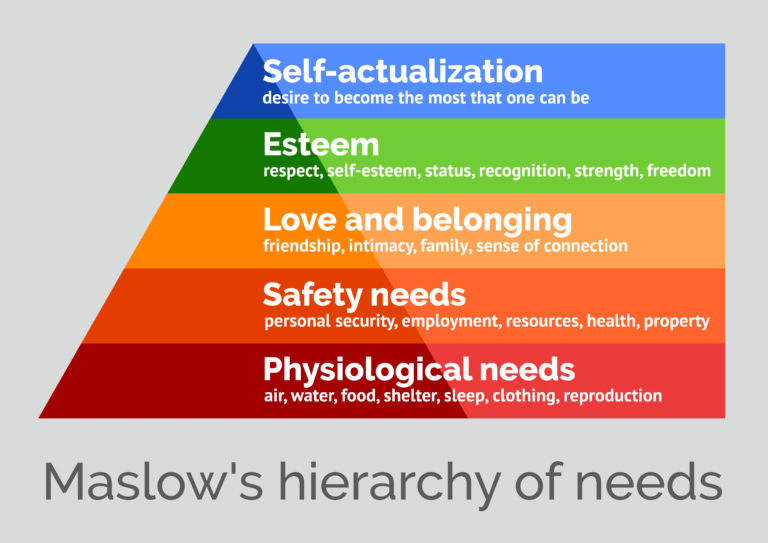
While lockdowns may finally be winding down across the world, several industries have had to find new ways to offset the losses caused by Coronavirus. When customers were prevented from visiting physical stores, businesses had to adapt and go digital, utilizing more email marketing strategies to interact with customers.
During the “new normal”, the retail sector saw e-commerce sales shoot up exponentially as most people were confined at home and generally more free time at their hands. Here are some interesting sales figures.
Why Are Online Sales Rising?
According to research by Klaviyo’s data science team that looked at 32,000 businesses that sell online, e-commerce sales went up 37% comparatively between the recorded start of the Coronavirus in the US to the beginning of the year. Reasons do vary for each business, but the majority of the revenue gained was attributed to the emails sent out by online businesses.
Before the pandemic was widespread in the US, brands were generating $8.5 million per day through email marketing, but now that number has gone up 68% – generating $14.3 million per day via email!
 Image Source: Klaviyo
Image Source: Klaviyo
Two root causes are responsible for this development: necessity and the need for human connection. With people forced to stay at home for their health and safety, they had to find an alternative means to get the items they want and need.
Emotional drivers were also linked to this predicament as the Coronavirus pandemic only raised people’s anxiety and desperation to meet their most basic needs. This rationale is explained much clearer in the following section.
Understanding Customer’s Needs During A Crisis
Used by many businesses to explain human behavior, Maslow’s Hierarchy of Needs is instructive for marketers to understand what motivates human beings to behave the way they do. In hierarchical order, Maslow defined 5 stages of needs:
- Physiological – i.e., the basics of food, water, clothing, shelter
- Safety – i.e., employment, health, property, family, social stability
- Love and Belonging – i.e., family, friendship, intimacy, sense of connection
- Self-esteem – i.e., achievement, respect of others, confidence, the need to be unique
- Self-actualization – i.e., creativity, spontaneity, purpose, morality
According to Maslow, human beings meet their needs at each tier of the pyramid accordingly – starting from the bottom and moving to the next tier and so on.
In business, this knowledge helps marketers realize how their products and services can serve consumers at each stage. Plus, it informs what needs may matter more to each customer or group of customers. For example, if someone with a family were to purchase a car, he/she may value safety and security over needing the car to acquire the admiration of others for his/her self-esteem.
Before the current crisis, many consumers would have met the first two tiers of needs, spending more time between the last three tiers. However, now that Coronavirus has flipped our lives upside-down, everybody had to refocus their efforts into the basic two tiers out of necessity.
In the first 3-4 weeks of lockdown, this situation forced many brands’ customers to shift their attention elsewhere to meet essential needs. The Coronavirus pandemic has certainly led to a massive drop in sales, but not all is lost.
The desire to find happiness will eventually return and people will want to quickly get their lives back on track. Right now, many brands that serve best at the later three tiers can benefit from ensuring their email messaging speaks to these needs. Most importantly, it must be done in a way that is empathetic to the current situation.
3 Ways Coronavirus Has Influenced Email Behaviour

The Coronavirus pandemic has disrupted our lives, but it has also changed email behaviour in some rather surprising ways. For marketers, these new considerations – influenced by Maslow’s hierarchy to a certain degree – are worth taking note of to make the proper adjustments to email programs.
-
Normal open times for emails have shifted.
As more employees are encouraged to work from home, several aspects of people’s daily routines have been affected. Particularly, checking emails during morning commutes to the office is no longer happening – such timings are not as predictable as before.
Marketers need to reconsider the best time to send emails by conducting A/B tests around send times.
Another method is to use intelligent send time optimization (STO). STO personalizes email communication by using billions of data points to build a profile of every subscriber you have – a profile that includes the time window when they open emails and click most often.
As customer behaviors will be expected to shift in these coming months, STO will automatically adjust send times as the model learns to determine the optimal schedule.
-
Revenues are down, but emails are keeping e-commerce user engagement high.
Since March, consumer needs have shifted and this has led to a disruption in revenue flows across most verticals. Industry analytics show, however, those product categories that have been trending upwards highly correlated with stay-at-home needs, whereas those categories that were trending downwards fail to meet those same needs.
We are seeing this kind of pattern right now because several businesses are grabbing people’s attention with empathetic messages. They’re aware of their customers’ biggest pain point during lockdown and social distancing.
With businesses forced to re-evaluate their budget spending to cope with affected sales, email marketing has become a preferred means for brand communication, with its high ROI, low costs, and retention capabilities.
Compared to other digital channels, email is driving more sustainable connections and e-commerce engagement right now because it’s a more direct means for customers to stay in contact with the brands they love.
-
Unsubscribe rates are at an all-time low.
Interestingly, unsubscribe rates have fallen by more than 50% across all verticals. Doug Sundahl, Senior Director of Strategic Services at Oracle CX Marketing Consulting said that “Perhaps because consumers are not in a rush, spending less time on daily commutes, and generally have more free time, they’re being less critical of the emails they receive from the brands they’ve subscribed to.” Especially if those emails are offering customized or consultative support to clients on a variety of topics, i.e. work-from-home strategies.
Consumer email behaviors will surely fluctuate in the months ahead as people slowly return to their normal lives. Accordingly, brands must not forget to monitor their KPIs closely to make adjustments.
Once you see negative metrics like unsubscribe rates and spam complaint rates begin to increase and your engagement rates decline, then it’s definitely time to readjust your email frequency and messaging.
How Businesses Can Get the Right Help
Over the next 3-6 months, things are going to get increasingly competitive. With core weaknesses revealed by the Coronavirus disruption, this means many businesses will have to fast-track their digital transformation initiatives to regain lost ground.
For marketers, focus on lead generation. While sales will be slow as the world gradually recovers from the Coronavirus pandemic, you can generate leads that will set you up for success once this crisis has passed.
With businesses unable to physically reply to customer’s prospects, lead generation will have to be taken online and engaged through email marketing. Figuring out how to secure more leads/customers in the new normal will not be easy, however.
Using a marketing automation platform like elfoMAP could be the best solution for future business progress. Email marketing can be made easier with the right suite of design and support functions.






